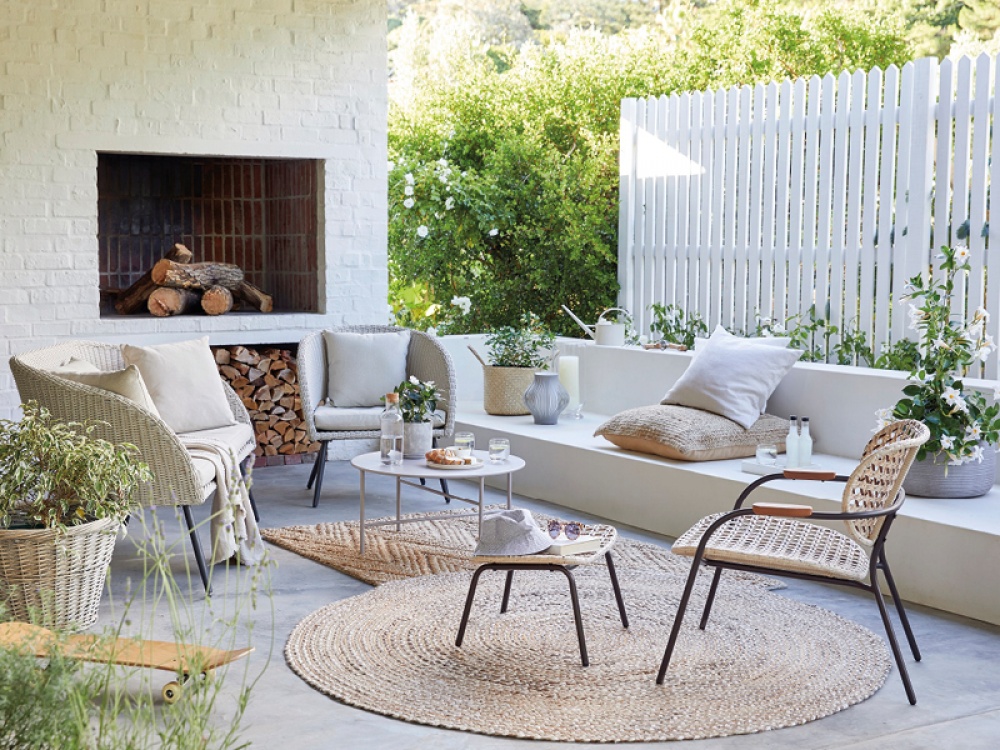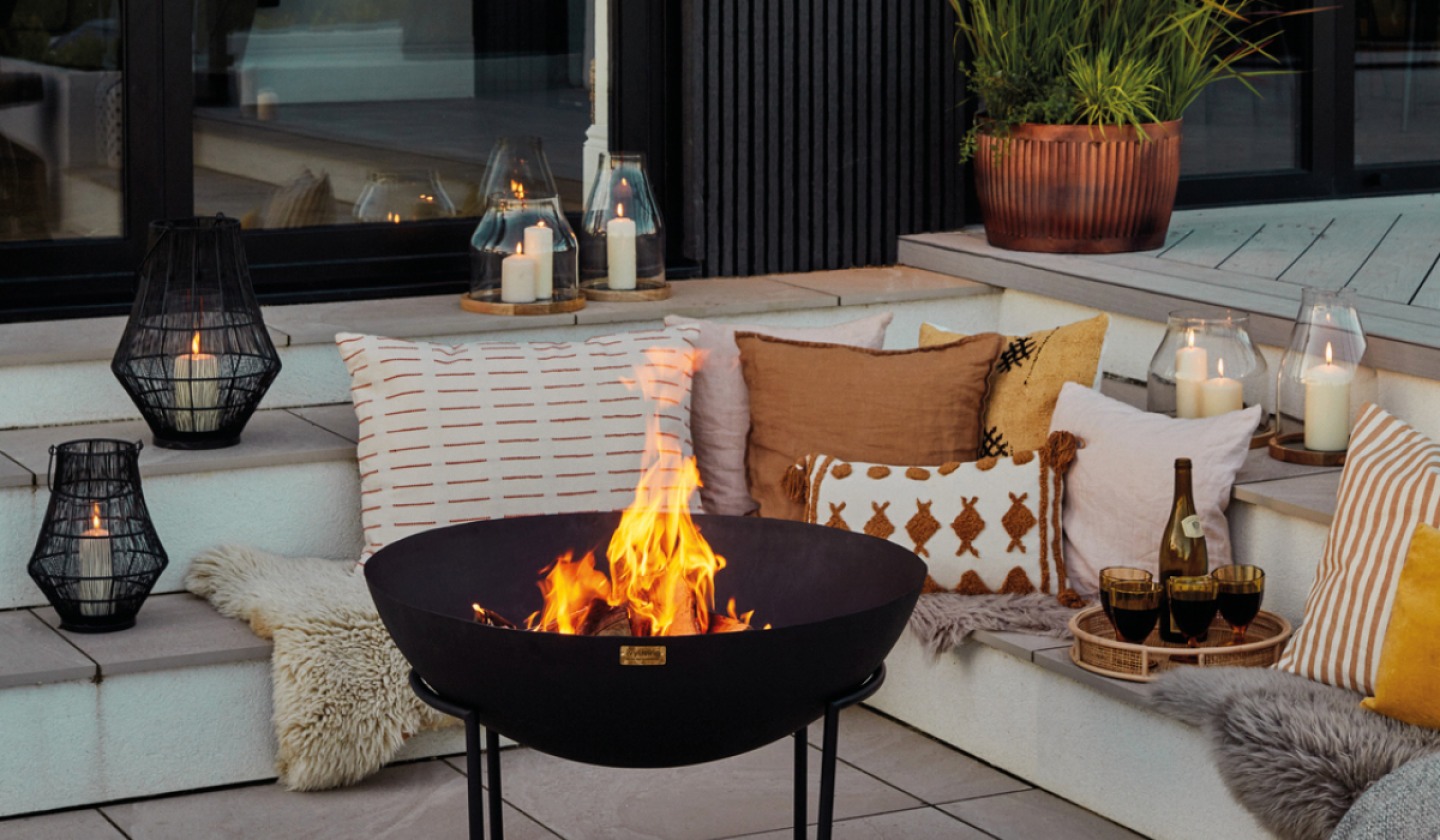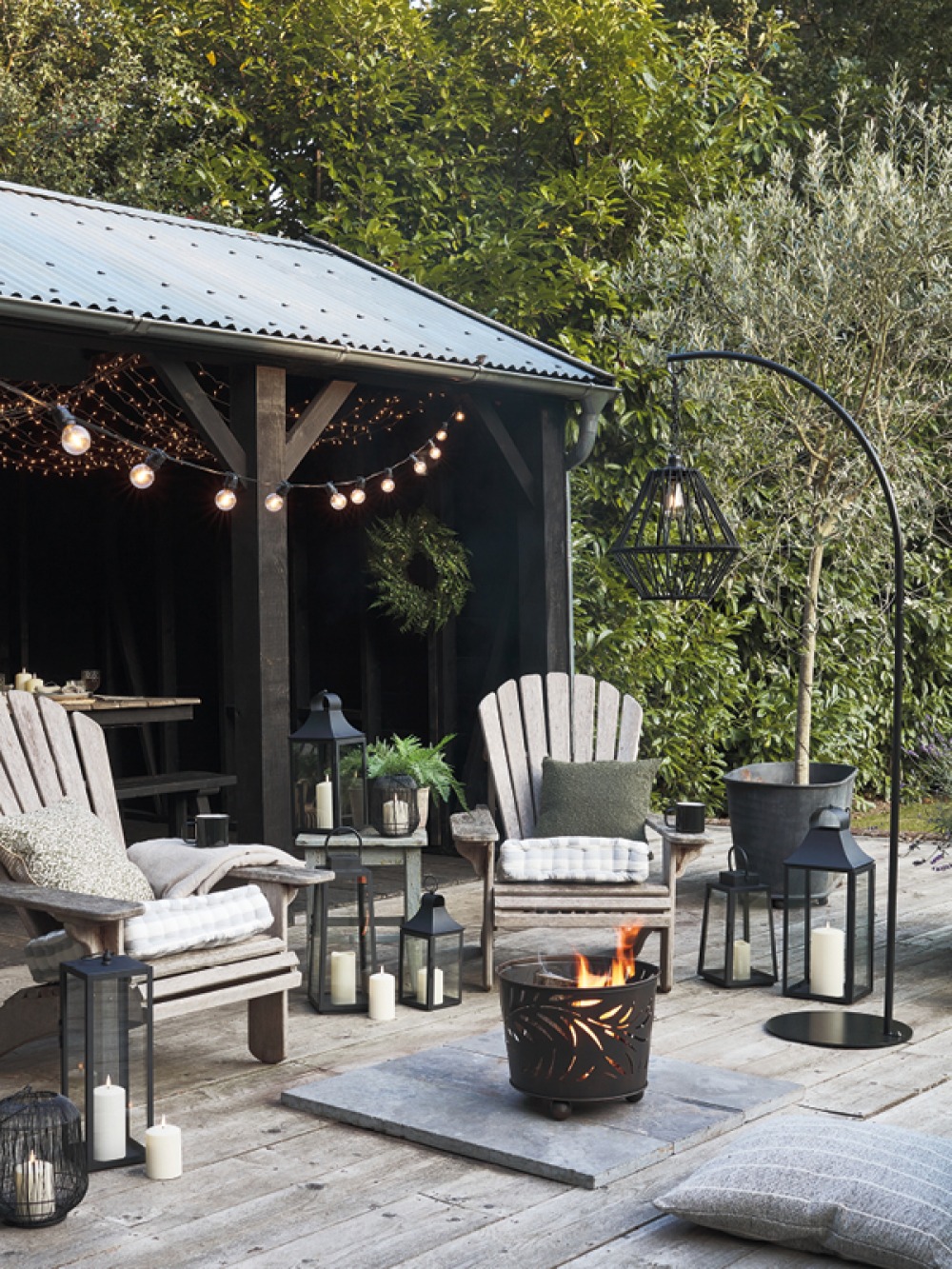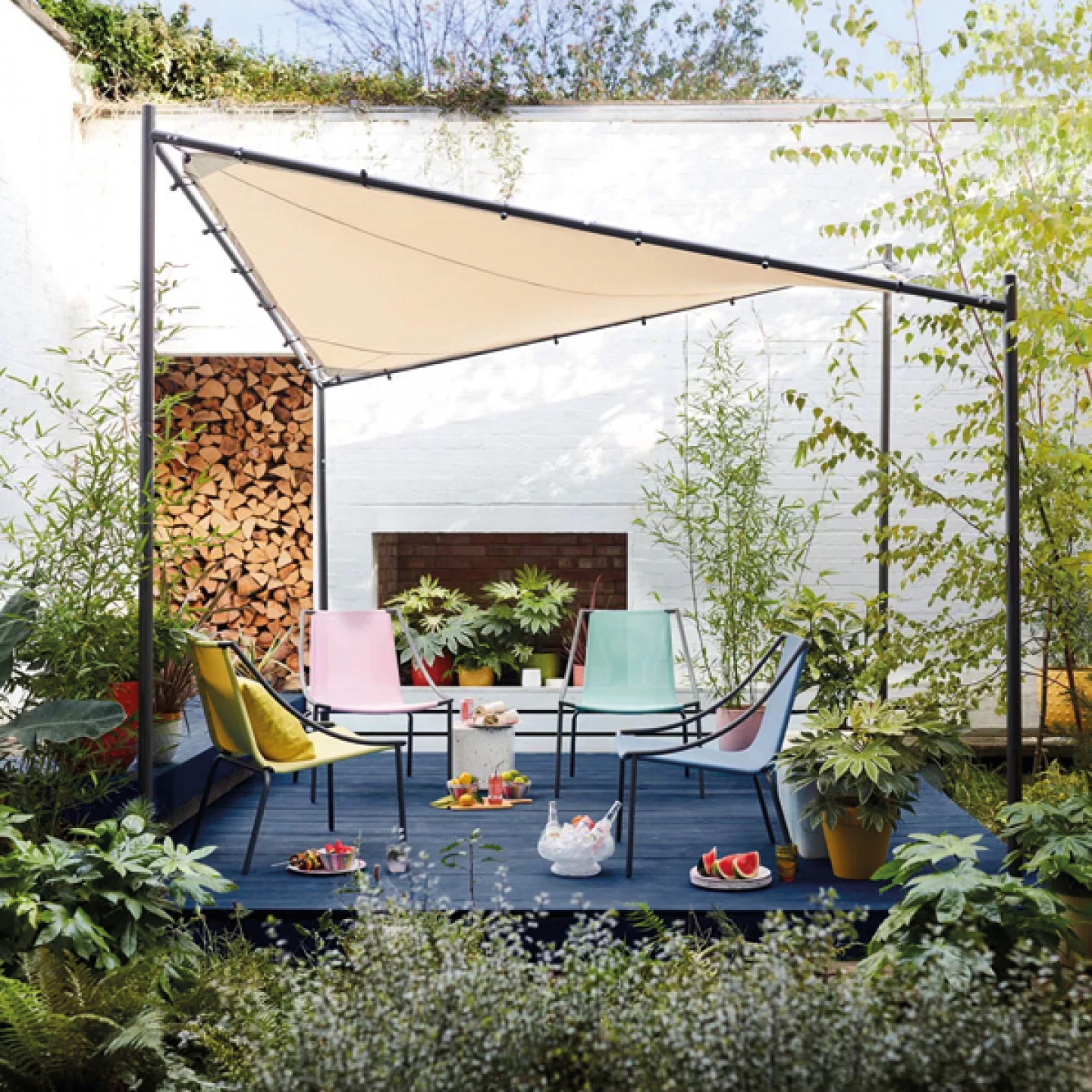How to Create a Useable Living Space Outdoors

Blurring the boundaries between the inside and out to extend your usable living space continues to be a focus for many

With luxury garden furniture outside and good-for-you green plants covering every available space inside, the line between indoors and outdoors has never been more blurred – and aren’t we the happier for it. More and more of us are taking greater delight in our gardens all year round with features such as fire pits and insulated garden pods making it possible to enjoy our outdoor spaces even in cooler temperatures.
There are some basic rules to follow when you are thinking of redesigning your garden space but any change, big or small, can be transformative.
When it comes to styling, try and carry the same basic style through from indoors so there is no obvious break. This is especially effective with your choice of flooring and a continuation of the same type of flooring will ensure the spaces really feel connected.
Layering up furniture and accessories, and adding rugs, cushions and lighting to create your own outdoor room, means you are far more likely to get pleasure from using the space. A neutral seating palette works in most outdoor spaces and you can add your own personality with things that are easily changeable. For those who love colour, an outdoor rug is a versatile option and think about adding a mirror to open up the space and make it feel bigger. An outside mirror also helps makes your space feel more room-like whilst floor cushions can be a great and cost-effective option for additional seating, adding to the laid-back vibe.

When it comes to furniture, it's worth investing in pieces that can be used both indoors and out, saving money and space, and giving you the flexibility to change-up your space when you want.
Experiment with your lighting. We all know the difference mood lighting can make to any room and it's the same in your garden. There's been a huge growth in the type of portable lighting now available, from rechargeable table lamps, to solar- and battery-powered standard lamps. Without having to worry about power sources you can play with your lighting to create the perfect effect for you and bring a warm glow to any garden space. Festoon lights are also poplar and are an easy and inexpensive way to add a touch of festival magic to your outdoors, but also think about uplighting features such as trees, borders or your favourite planters to add interest.
Read More: Nine Beautiful Pared-back Accessories for your Outside Space
Bigger areas can be divided into zones for eating and lounging but be mindful that you should try and retain a sense of flow throughout the space, which will ensure you make the most of all the usable space. Also think carefully about the position of your table and chairs. Are you more likely to use them in a shaded spot but near the house, or are you happy to traipse to the sunnier space at the far end of your garden? Zoning the garden is especially useful for families as you can create safe play areas for smaller kids and hang-out zones for teenagers, without having to always share the same space. It keep the garden tidier too.
Adding an awning or pergola to create welcome shade in the heat of the day will make your garden more welcoming for anyone who doesn't love the midday heat. They can look super-smart too.
Whether you buy a portable one, or decide to build a permanent feature, a fire pit will help you extend the time spend outside. The warmth of a fire draws people in and means you can brave cooler evenings outdoors.
Read More: How to Extend Your Outdoor Living Space and Turn Unused Areas into Private Sanctuaries
Climate change is never far from the front of our consciousnesses these days, and it's important to consider the environmental impact of the materials we choose to use in our gardens. Single-use plastics are obviously a big no-go. Instead opt for recycled plastics; rather than concrete, choose porcelain or ceramic paving, (which emit far less carbon dioxide when produced); and when it comes to decking, make it composite. With modern advances in extrusion and printing, what we once thought of as ugly, low-quality imitations of the traditional materials we were more familiar with, are now looking almost identical to their natural counterparts, meaning we’re starting to see an almost limitless scope for garden design.
But your outdoor room isn't just about the furniture. It's important to add interest with planting whether that's in beds and borders or space-saving planters.


WORK WITH YOUR SPACE
The first and most important thing to remember when planning your garden is to work with the space you have. South- and west-facing gardens are a huge bonus, but unfortunately not all homes can enjoy the sun all day and well into the evening. While you might despair initially at the prospect of a garden with a lot of shady spots, there is still a lot that can be done in the shadows. Many plants in fact, are actually happier in the shade than in the full sunshine. Foxgloves, astilbe and Japanese forest grass are just a few of the beautiful, shade-loving plants out there.
NO NEED FOR WEEDS
Now let’s face it, if you’re clocking off work to get home for around six o’clock every evening, the last thing you’re going to want to do during your long-awaited weekends is spend hours cutting back hedges and weeding. A great alternative is to use a weed membrane with gravel on top (to suppress the growth of weeds) and then plant low-maintenance plants such as grasses, ferns and bamboo. Raised beds with sleepers and bark mulches also help keep weeds to a minimum.
CATCH OUT THE DROUGHT
Of course, the ultimate low-maintenance gardening tip is switching to an artificial lawn, and one of the best things about faking it is that your garden won’t look scorched or dried out by any long periods of sunshine we may be lucky enough to have this summer. That’s on top of eliminating the need for you to spend your time cutting, weeding or feeding it.
RAISE THE ROOFS
Green roofs are the new favourite of green-fingered eco-warriors, having steadily grown in popularity over the last decade – and with good reason. A roof that supports the growth of grass or plants, commonly planted onto existing shed roofs, they not only help you to reclaim some of the gardening space your shed or outhouse has taken up, but they also provide heat and sound insulation to your outbuildings, improve air quality, reduce your carbon footprint and encourage local wildlife into your garden. Plus, they’ll add extra texture and colour to your outdoor space and, let’s face it, provide one heck of a talking point.
ON THE WALL
If space is limited or you have an eye-sore you'd like to hide then a growing wall is a great option. Simple and easy to install, stackable wall planters can be easily attached to boundary fences, balcony railings or garden and shed walls. Get creative and plant up with pretty annuals, interesting evergreens for lower maintenance, or they also make great vertical veg boxes, so plant up with herbs and salad crops to use in the kitchen. There are other benefits to plant walls, not just their looks. A vertical garden keeps a building cooler in summer and provides insulation in winter helping to save on your electricity bill. Near the house they can also help with air filtration, capturing pollution and gases, filtering toxins and converting carbon dioxide to oxygen. They can also help deflect water away from buildings during heavy rain.










